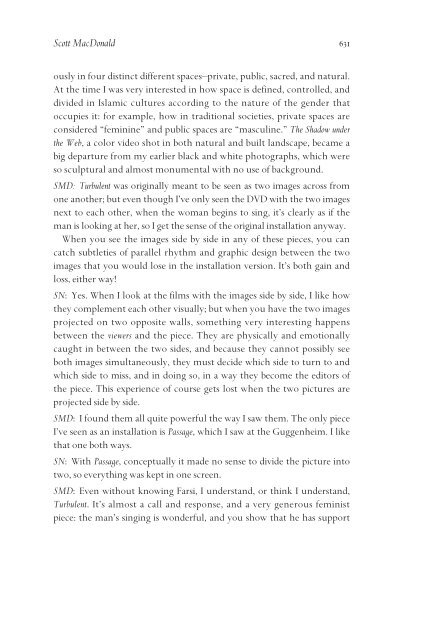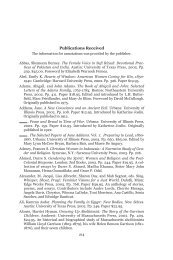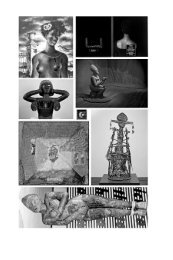An Interview with Shirin Neshat - Feminist Studies
An Interview with Shirin Neshat - Feminist Studies
An Interview with Shirin Neshat - Feminist Studies
You also want an ePaper? Increase the reach of your titles
YUMPU automatically turns print PDFs into web optimized ePapers that Google loves.
Scott MacDonald 631<br />
ously in four distinct different spaces–private, public, sacred, and natural.<br />
At the time I was very interested in how space is defined, controlled, and<br />
divided in Islamic cultures according to the nature of the gender that<br />
occupies it: for example, how in traditional societies, private spaces are<br />
considered “feminine” and public spaces are “masculine.” The Shadow under<br />
the Web, a color video shot in both natural and built landscape, became a<br />
big departure from my earlier black and white photographs, which were<br />
so sculptural and almost monumental <strong>with</strong> no use of background.<br />
SMD: Turbulent was originally meant to be seen as two images across from<br />
one another; but even though I’ve only seen the DVD <strong>with</strong> the two images<br />
next to each other, when the woman begins to sing, it’s clearly as if the<br />
man is looking at her, so I get the sense of the original installation anyway.<br />
When you see the images side by side in any of these pieces, you can<br />
catch subtleties of parallel rhythm and graphic design between the two<br />
images that you would lose in the installation version. It’s both gain and<br />
loss, either way!<br />
SN: Yes. When I look at the films <strong>with</strong> the images side by side, I like how<br />
they complement each other visually; but when you have the two images<br />
projected on two opposite walls, something very interesting happens<br />
between the viewers and the piece. They are physically and emotionally<br />
caught in between the two sides, and because they cannot possibly see<br />
both images simultaneously, they must decide which side to turn to and<br />
which side to miss, and in doing so, in a way they become the editors of<br />
the piece. This experience of course gets lost when the two pictures are<br />
projected side by side.<br />
SMD: I found them all quite powerful the way I saw them. The only piece<br />
I’ve seen as an installation is Passage, which I saw at the Guggenheim. I like<br />
that one both ways.<br />
SN: With Passage, conceptually it made no sense to divide the picture into<br />
two, so everything was kept in one screen.<br />
SMD: Even <strong>with</strong>out knowing Farsi, I understand, or think I understand,<br />
Turbulent. It’s almost a call and response, and a very generous feminist<br />
piece: the man’s singing is wonderful, and you show that he has support




